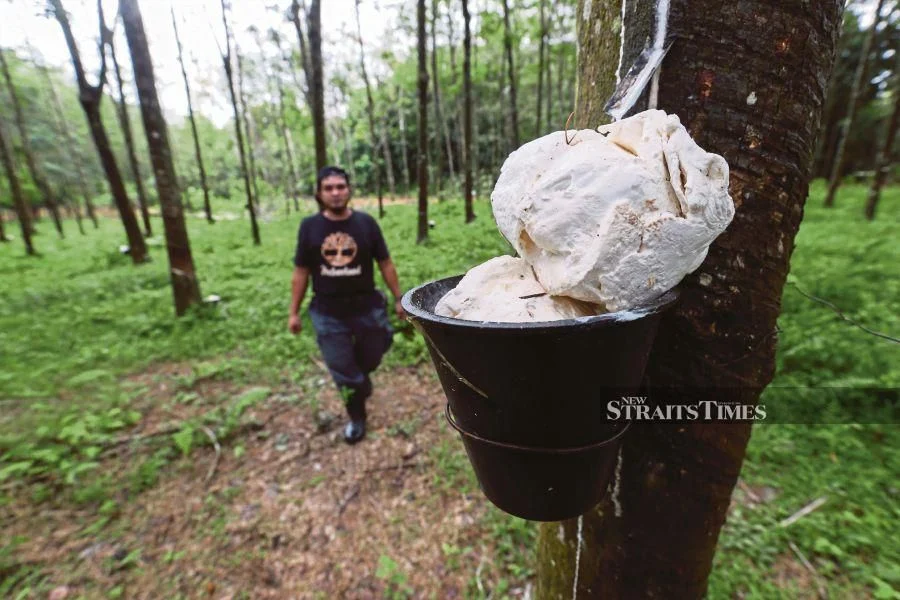by Professor Datuk Dr. Ahmad Ibrahim, Tan Sri Omar Centre for STI Policy Studies, UCSI University
SEPT 4 proved to be another sad
day for the more than 200,000
rubber smallholders in the country, as news of the drastic decline
in the world rubber price hit the
headlines again.
It was reported that in two
months, the price of cup lump
rubber dropped from RM3.20 per
kg to RM2.30 per kg.
The price is simply not enough
to support smallholders and their
families. It is much worse if you are just a
rubber tapper and not a small holder, as you will get only half
the proceeds.
On average, a tapper working 18
days a month brings home a meager RM700.
With the rise in living costs,
rubber tappers will be pushed
further down the poverty ladder.
Smallholders are not asking for
much, just that the price of cup
lump rubber be maintained at
above RM3 per kg.
With climate uncertainties and
flooding during the monsoon
months, one can understand
their growing restlessness.
The irony of it all is that while
rubber smallholders are suffering, downstream rubber product
manufacturers benefit from
the resurgence in demand as
the global economy recovers
from the lull during the pandemic.
By right, they should also be
worried because if fewer small holders are tapping rubber, the
world supply will also decline.
We must remember that natural rubber remains a sought-after material in many products.
It has been suggested by some
that one strategy would involve
the government buying rubber
from smallholders at a fixed
higher price.
This may be funded by the entire downstream rubber industry,
but keeping the rubber as stock
may not be a good idea.
This is because in a market with high inventories the world
price will continue to be suppressed, which will make things
worse.
Another strategy is to use excess rubber in roads, as we spend
a lot on road repair and maintenance year in and year out.
I have observed that refilling
potholes accounts for much of the maintenance costs.
The government should consider incorporating rubber in the
road repair formulations.
Studies by the Malaysian Rubber Board have shown that the
durability of roads can be improved significantly by using a
rubberised bitumen mix.
The more important thing is
that a high volume of cup lump
rubber can be used directly. We
should encourage all natural rubber-producing countries to do
the same.
That would take away a high
volume of rubber from the stock
and prop up world prices.
The Bangkok-based International Rubber Consortium, funded by Malaysia, Indonesia, and
Thailand, is supposed to manage
stock levels.
However, it is dysfunctional
and has never worked, so it may
be time to close that organisation.
Another threat to the production of natural rubber has also
emerged.
I am referring to the Pestalotiopsis leaf disease, which has
been spreading in rubber-producing-countries lately.
Rubber agrono-mists have confirmed that this debilitating disease can have serious consequences for rubber yield.
Many studies have predicted a
yield decline of up to 25 per cent
if the disease is left unattended.
Unless the right measures
are developed to deal with this
disease, the world supply of natural rubber will be adversely affected.
It is in the interest of the
world’s rubber industry to take
this potential supply disruption
seriously.
We have not even touched
on the supply threats to synthetic
rubber, as the world pushes
or NetZero.
NetZero will lead to a decline in the supply of fossil-based synthetic rubber (SR).
The fact that there are many
applications that do not have a
substitute for SR should cause
concern in product manufacturers.
Whatever it is, there is a strong message here that everyone must
work together to ensure a sustained supply of rubber for the
industry.










